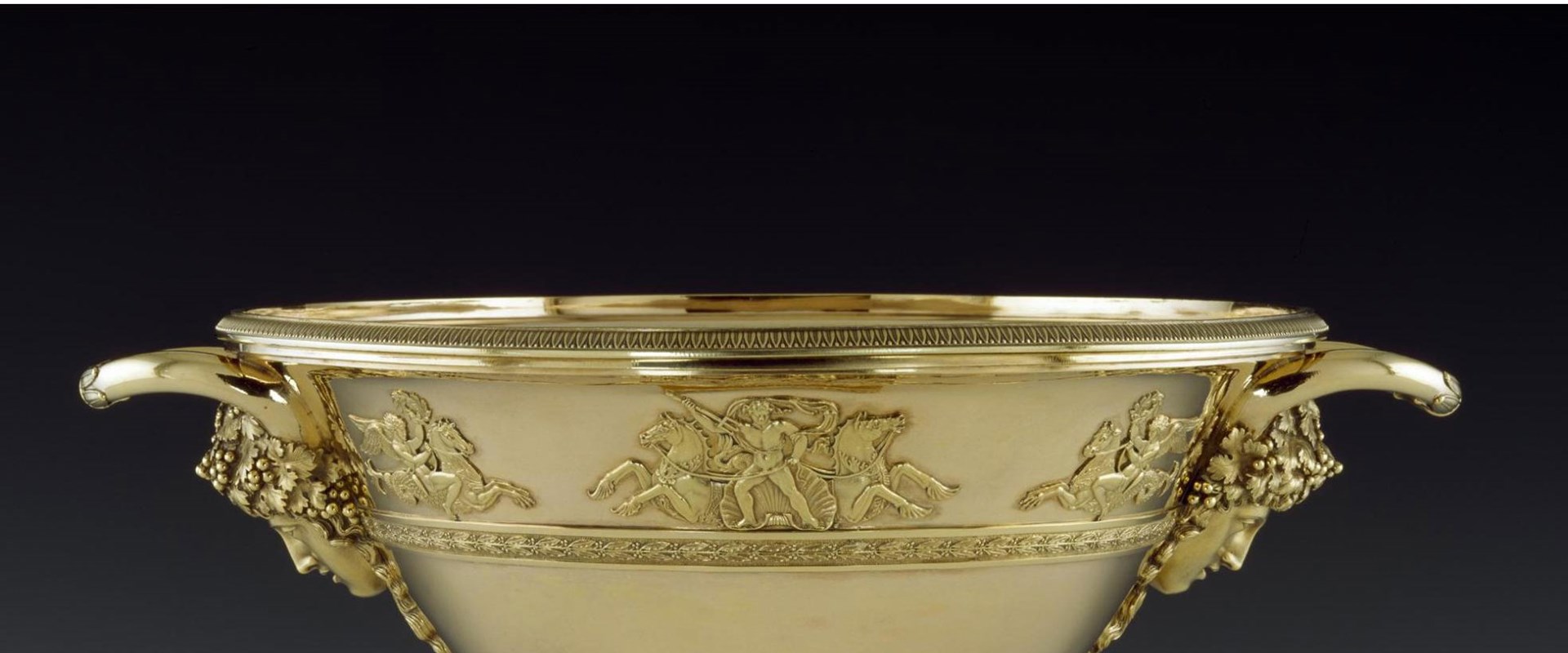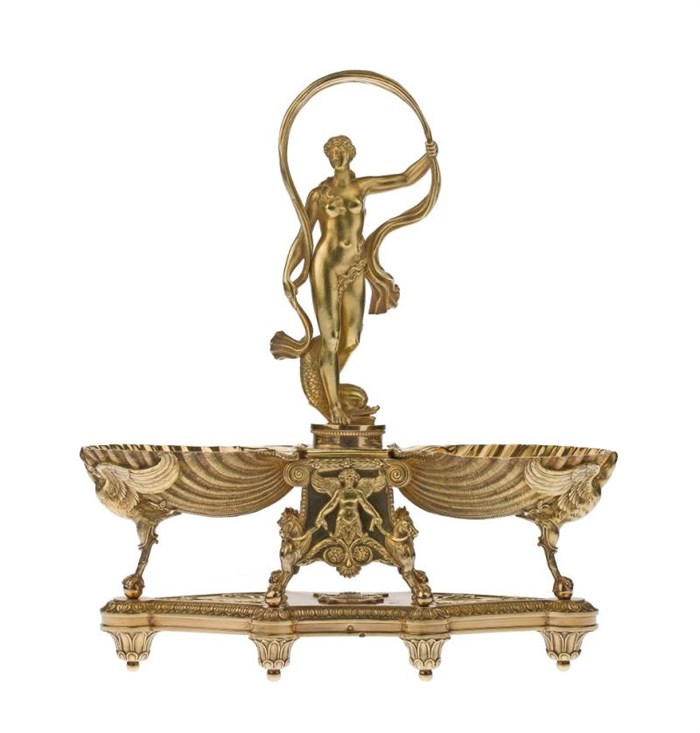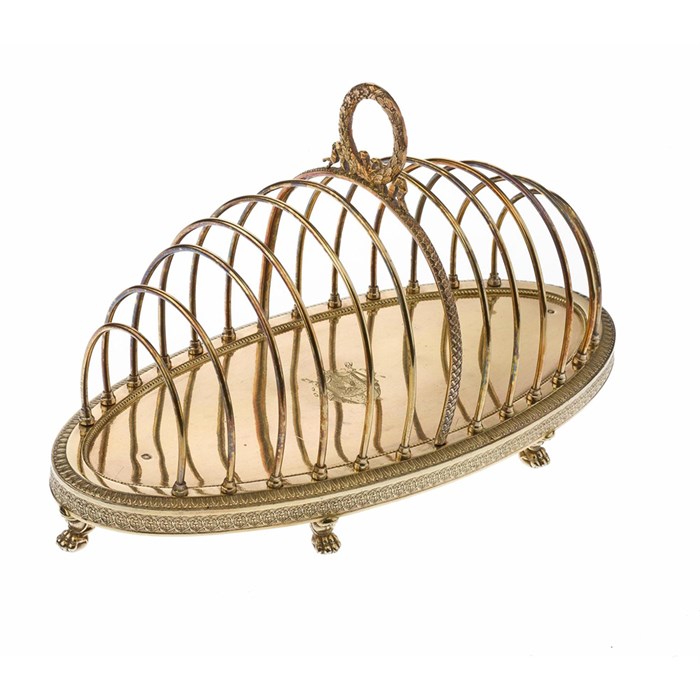Key in a search term below to search our website.
Key in a search term below to search our website.

This great silver-gilt tea service was created for the Emperor Napoleon and his second wife, the Archduchess Marie-Louise of Austria, shortly after their wedding in 1810.
Date
1810
Designed by
Charles Percier
Made by
Martin-Guillaume Biennais
Made in
Paris, France
Made from
Silver-gilt and other materials
Acquired
With the support of the Art Fund
Museum reference
A.1976.750.1
On display
Art of Living, Level 5, National Museum of Scotland
Did you know?
The tea service is decorated with bees, which were Napoleon's heraldic emblem.

This great silver-gilt tea service was created for the Emperor Napoleon and his second wife, the Archduchess Marie-Louise of Austria, shortly after their wedding in 1810.
Many of the main pieces – such as the double salts, sugar bowl and punch bowl – were designed by Napoleon’s architect Charles Percier. The tea service was assembled and supplied by the Emperor's goldsmith, Martin-Guillaume Biennais.
The eagle of Zeus on the sugar bowl and the Emperor’s portrait on the knife handles glorify Napoleon. The figure of Venus, goddess of love, on the salts and the mythological lovers Cupid and Psyche on the sugar bowl celebrate Napoleon and Marie-Louise’s marriage.
The tea service presents so many Napoleonic references that it could not be used by the restored Bourbon Kings of France. It was sold in 1830 by King Charles X to agents acting for Alexander, 10th Duke of Hamilton.

Alexander, 10th Duke of Hamilton (1767-1852) was extremely proud of his titles and status as premier peer of Scotland. He lived up to his reputation by building a huge Classical-style north block onto Hamilton Palace and acquiring outstanding French furniture and other items which transformed the palace into an amazing treasure house.
The Duke of Hamilton was a great admirer of the Emperor Napoleon, and he demonstrated this and his opposition to the British government of the time, by commissioning a very expensive portrait of the Emperor and displaying it in London in the early 1800s.
After Napoleon’s defeat, the Duke became an ardent admirer of the Emperor’s sister, Princess Pauline Borghese, and the trusted friend of the Emperor’s mother and uncle, Cardinal Fesch.
In 1825 Princess Pauline bequeathed her wonderful travelling service to the Duke as a token of her thanks for all his help. Her bequest inspired the Duke to commission Napoleon’s former architect Charles Percier to produce designs for the new interiors of Hamilton Palace. This led, in turn, in 1830 to the purchase of the stupendous silver-gilt tea service.
Napoleon’s tea service is now divided between the Louvre in Paris, which acquired chest one and its contents in 1919, and National Museums Scotland, which bought the second chest in 1976, with the aid of the Art Fund.
Acquired with Art Fund support